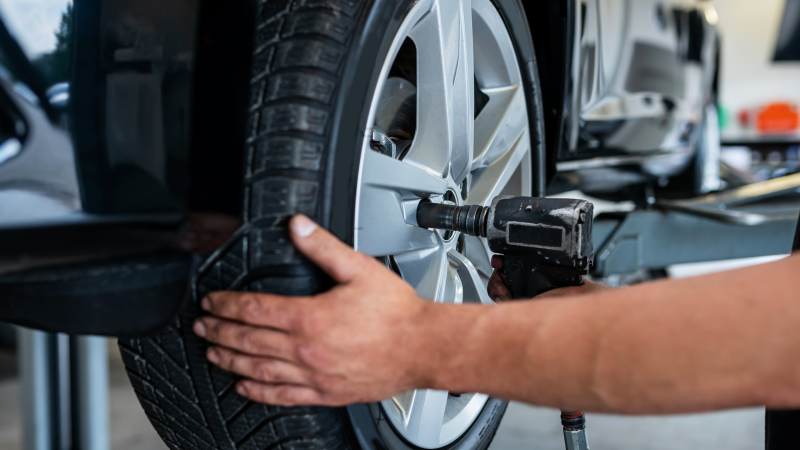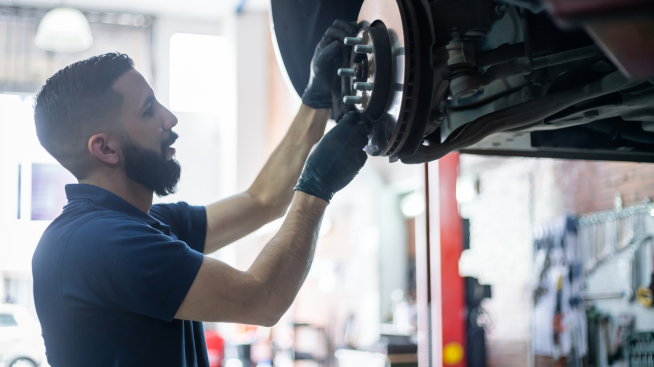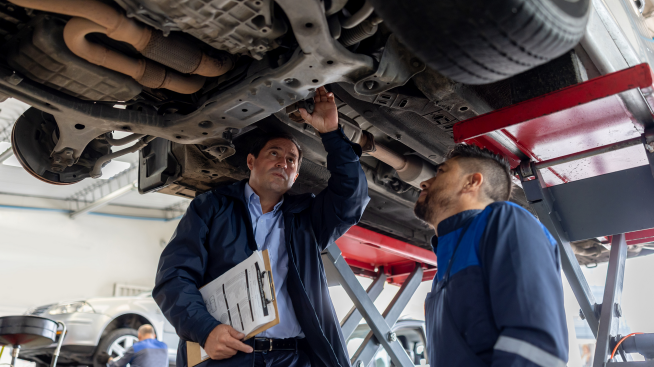Understanding tire dry rot

Tire maintenance is a critical aspect of overall car maintenance, and bad tires can spell trouble in a host of ways. From impacting fuel efficiency to causing car shaking and possibly even causing loss of control. Worn tire treads are problematic enough on their own but tire dry rot could ruin your ride before that even happens. Let’s learn more about dry rot tires and how you can prevent them.
What is dry rot on tires?
You may have heard of dry rot occurring in wood due to a fungal infection. Tire dry rot, however, isn’t organic or infectious. Instead, tire dry rot describes a type of decay that occurs when natural oils and other components of the car tire degrade, leaving the tire brittle and prone to cracking. This can be extremely dangerous as the tire could deteriorate quickly and suddenly while you’re driving.
Here are a few common signs that could indicate that you have dry rot tires:
- Cracked sidewall: Small but noticeable cracks in the tire sidewall could indicate early-onset dry rot. Without intervention, it’s likely these cracks will expand over time.
- Cracked tread: As sidewall cracking gets more advanced, it could also start creeping out to the tire treads.
- Brittleness: Dry rot tires appear to have a hard, brittle appearance compared to a healthy tire. They may also start flaking upon contact.
- Discoloration: Premature graying or fading of your tire’s color may indicate tire dry rot.
Common causes of tire dry rot
While all tires naturally degrade over time, tire dry rot can significantly accelerate the process. Here are a few common culprits to look out for:
- Extreme climate: People living in excessively hot or cold climates may experience faster wear on their tires as extreme weather tends to speed up the degradation of the tire.
- Chemical or ozone exposure: Abrasive and corrosive chemicals such as those found in motor oil or certain cleaning solutions may speed up tire dry rot, as could exposure to ozone that is generated by some types of electrical equipment.
- Ultraviolet (UV) rays: Excessive exposure to direct sunlight and UV rays can potentially cause tires to start decaying faster.
- Underinflation: Underinflated tires flex more than they should, which can lead to a breakdown of the material over time.
- Lengthy period of disuse: Tires need to be used regularly and rotated periodically to help retain their elasticity. Lengthy periods of sitting idle may cause tire dry rot to occur faster than it would otherwise.
How to prevent dry rot on tires
The good news is that there are several relatively small things you can do as a car owner to help lower the risk of developing tire dry rot. Here are a few things to consider:
- Regular tire maintenance: Little things like keeping your tires properly inflated and rotated will help prolong their life. It may also help to casually inspect your tires every few weeks just to ensure that if an issue does arise, you can nip it in the bud.
- Proper treatment: Treat your tires well, and they’ll treat you well in return. If you can, it’s best to avoid things like overloading the car (and therefore, the tires) or leaving it unused for prolonged periods of time.
- Mind your storage: If you live in an area with extreme temperatures, it may be beneficial to your car’s health to park it indoors or underground. The parking area should also be clear of any hazardous chemicals or ozone-producing equipment.
In summary
Tire dry rot is a serious, potentially hazardous condition caused by the breakdown of your tire’s chemical components. You can identify dry rot tires by the appearance of cracking along the tire’s sidewall or treads, discoloration, brittleness and flaking upon contact. This could be caused by several things, from UV ray exposure to underinflation. In most cases, tire dry rot damage is irreversible, but the condition itself can be prevented with a few minor precautions and routine car maintenance. As with many things in life, a little bit of care at regular intervals can go a long way toward keeping your tires spinning for miles to come.



